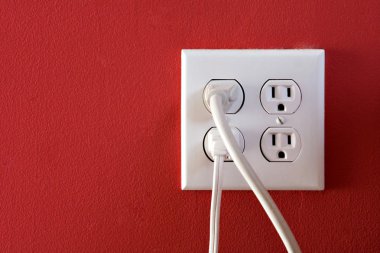Rotten Wood: Causes, Prevention, and Repair
Rotten wood is a common problem in many homes and buildings. It can be caused by a variety of factors, including moisture, fungi, and insect infestations. When left untreated, rotten wood can lead to serious structural damage and compromise the overall safety of the building. Understanding the causes and identifying the signs of wood rot is crucial in preventing and addressing this issue.
Wood rot can occur in any type of wood, but is most commonly found in areas that are exposed to moisture. This includes areas around windows, doors, and roofs, as well as areas that are in direct contact with the ground. Signs of wood rot include discoloration, softness, and a musty odor. It is important to assess the extent of the damage before deciding on a course of action.
There are a variety of treatment options and repair techniques available for addressing rotten wood. DIY methods can be effective for minor cases of wood rot, while more extensive damage may require professional help. Prevention strategies and regular maintenance can also help to prevent wood rot from occurring in the first place.
Understanding Wood Rot
Defining Wood Rot
Wood rot is a natural process that occurs when wood is exposed to moisture and fungi. It is a type of decay that can weaken the structural integrity of the wood and make it more susceptible to damage. Wood rot is a common problem in areas with high humidity and moisture, such as bathrooms, kitchens, and basements.
Types of Wood Rot
There are three main types of wood rot: brown rot, white rot, and soft rot. Brown rot is the most common type of wood rot and is caused by fungi that break down the cellulose and hemicellulose in the wood. This type of rot causes the wood to become brown and crumbly, and it can weaken the wood’s structure.
White rot is less common than brown rot and is caused by fungi that break down the lignin in the wood. This type of rot causes the wood to become white and spongy, and it can also weaken the wood’s structure.
Soft rot is caused by fungi that decompose wood more slowly than brown-rot fungi and white-rot fungi. It thrives in temperatures too hot and too cold for the other types to survive, between 0 and 110 degrees Fahrenheit. Soft rot can cause the wood to become soft and mushy, and it can also weaken the wood’s structure.
What Causes Wood Rot?
Wood rot is caused by a combination of moisture and fungi. When wood is exposed to moisture, it creates an environment that is perfect for fungi to grow. Fungi feed on the wood and break down its structure, causing it to weaken and decay over time.
There are several factors that can contribute to wood rot, including:
- High humidity
- Poor ventilation
- Water leaks
- Condensation
- Flooding
- Inadequate drainage
- Lack of sunlight
It is important to address any issues that may be contributing to wood rot in order to prevent further damage to the wood and to ensure the safety of the structure.

Causes of Wood Rot
Wood rot is a common problem that affects many wooden structures and supports. It is caused by a variety of factors, including fungal growth and moisture intrusion. In this section, we will explore the main causes of wood rot in more detail.
Fungal Growth
Fungal growth is one of the most common causes of wood rot. Fungi are microorganisms that thrive in moist environments and feed on organic matter, such as wood. When fungi colonize a piece of wood, they break down its cell walls and cause it to become weak and brittle. Over time, the wood will begin to rot and decay.
There are many different types of fungi that can cause wood rot, including brown rot, white rot, and soft rot. Each type of fungus has its own unique characteristics and can cause different types of damage to wood.
Moisture Intrusion
Moisture intrusion is another common cause of wood rot. When wood is exposed to moisture for extended periods of time, it can begin to absorb water and become saturated. This can cause the wood to swell and warp, making it more susceptible to rot and decay.
There are many ways that moisture can enter wood, including through leaks in roofs and walls, condensation, and high humidity levels. It is important to identify and address the source of moisture as soon as possible to prevent further damage to the wood.
Wood rot is caused by a combination of factors, including fungal growth and moisture intrusion. By understanding these causes and taking appropriate measures to prevent them, homeowners can protect their wooden structures and supports from rot and decay.
Identification of Wood Rot
Wood rot is a common problem that can cause significant damage to wooden structures. Identifying wood rot early is crucial to prevent further damage and costly repairs. Here are two effective ways to identify wood rot:
Visual Inspection
The first step in identifying wood rot is to visually inspect the wood. Look for signs of discoloration, cracks, or fungal growth on the surface of the wood. Discoloration can range from dark brown to black, and fungal growth can appear as a white or yellowish film on the surface of the wood.
Probing for Softness
Another way to identify wood rot is to probe the wood for softness. Use a screwdriver or an awl to gently press into the wood. If the wood feels soft or spongy and the tool goes in easily, it may be rotten. In some cases, the wood may even crumble or break apart when probed.
It’s important to note that not all wood discoloration or fungal growth indicates wood rot. Some types of fungi are harmless, and wood can also discolor due to exposure to sunlight or other environmental factors. Therefore, it’s essential to have a professional inspect the wood and determine the extent of the damage before taking any action.
Regular inspections of wooden structures can help identify wood rot early and prevent further damage. If wood rot is detected, it’s important to address the issue promptly to prevent further damage and ensure the safety of the structure.
Assessing Wood Rot Damage
When it comes to wood rot, it is essential to assess the damage to determine the extent of decay and structural impact. This section will discuss the two aspects of assessing wood rot damage.
Extent of Decay
To determine the extent of decay, one should look for signs of rot, such as discoloration, sunken areas, and soft spots in the wood surface. An electronic moisture meter may also be used to identify areas of high moisture content, which can indicate the presence of rot.
It is important to note that not all types of rot are visible, and some may be hidden behind paint or other coatings. Therefore, it is crucial to inspect the wood thoroughly, including the undersides of surfaces, joints, and connections.
Structural Impact
Once the extent of decay has been determined, it is essential to assess the structural impact of the damage. This involves evaluating the strength and stability of the affected wood members and determining whether they need to be repaired or replaced.
If the damage is minor, such as surface rot or small areas of decay, the wood can often be repaired with wood filler or epoxy. However, if the damage is severe, such as extensive rot or structural damage, the affected wood members may need to be replaced entirely.
It is important to note that the structural impact of wood rot can be significant, and it is essential to address the issue promptly to prevent further damage or potential safety hazards.
Overall, assessing wood rot damage requires a thorough inspection and evaluation of the extent of decay and structural impact. By taking the necessary steps to assess and address wood rot damage, homeowners can ensure the safety and stability of their homes.
Treatment Options
When it comes to treating rotted wood, there are various options available. The two most common treatments are chemical treatments and epoxy consolidants.
Chemical Treatments
Chemical treatments are used to stop the rotting process and prevent further decay. The most common chemical treatment used is a wood hardener. This is a liquid that is applied to the rotted area, and it penetrates the wood fibers to harden them. Once the wood hardener has dried, the wood can be sanded, painted, or stained.
Another chemical treatment option is a borate treatment. Borates are naturally occurring minerals that are used to protect wood from rot and insect damage. Borate treatments are effective in preventing rot and can also be used as a preventative measure.
Epoxy Consolidants
Epoxy consolidants are a two-part system that is used to repair rotted wood. The first part is a liquid epoxy that is applied to the rotted area. This epoxy penetrates the wood fibers and hardens them. The second part is a filler epoxy that is used to fill in any gaps or holes in the wood. Once the filler epoxy has dried, the wood can be sanded, painted, or stained.
Epoxy consolidants are a good option for repairing rotted wood that cannot be replaced. They are also effective in preventing further decay and can be used as a preventative measure.
Treating rotted wood is possible with the right tools and techniques. Chemical treatments and epoxy consolidants are two effective options for treating and repairing rotted wood. It is important to assess the severity of the rot and choose the appropriate treatment option.
Repair Techniques
When it comes to repairing rotten wood, there are two main techniques: patch repair and replacement of affected wood. Each technique has its own benefits and drawbacks, and the best approach will depend on the severity of the rot and the nature of the project.
Patch Repair
Patch repair is a technique that involves removing the affected area of the wood and replacing it with a patch. This technique is ideal for small areas of rot and can be a quick and easy fix. The first step is to remove all the rotten wood using a chisel or saw. The area should then be cleaned and dried thoroughly. Once the area is ready, a patch can be created using epoxy or wood filler. The patch can be shaped to match the surrounding wood and sanded smooth once it’s dry.
Replacement of Affected Wood
For larger areas of rot or when the structural integrity of the wood has been compromised, replacement of affected wood is the best approach. This technique involves removing the entire affected area and replacing it with a new piece of wood. The first step is to remove all the rotten wood, including any nearby healthy wood that may be affected. The area should then be cleaned and dried thoroughly. Once the area is ready, the new piece of wood can be cut to size and installed using wood screws or nails. The new piece of wood should be treated with a wood preservative to prevent future rot.
Can I Treat or Repair Rotted Wood?
It is possible to treat and repair rotted wood, but the success of the repair will depend on the severity of the rot and the technique used. Patch repair can be used for small areas of rot, but for larger areas, replacement of affected wood may be necessary. It’s important to address rot as soon as possible to prevent it from spreading and causing further damage. Regular maintenance and inspection of wood structures can help prevent rot from occurring in the first place.
Prevention Strategies
Preventing wood rot is essential to maintain the structural integrity of wooden structures. Here are some effective prevention strategies that can be used to avoid future problems.
Moisture Control
Moisture is one of the primary causes of wood rot. To prevent moisture buildup, it is important to keep the wood dry. Here are some ways to control moisture:
- Fix any leaks in the roof or plumbing to prevent water from seeping into the wood.
- Install gutters and downspouts to direct rainwater away from the structure.
- Use a dehumidifier to remove excess moisture from the air.
- Avoid overwatering plants near the structure.
Proper Ventilation
Proper ventilation is another important factor in preventing wood rot. Adequate ventilation helps to keep the wood dry and prevents fungal growth. Here are some ways to ensure proper ventilation:
- Install vents in the attic and crawl space to allow air to circulate.
- Use fans to improve air circulation.
- Trim tree branches near the structure to allow sunlight and air to reach the wood.
- Avoid stacking firewood against the structure.
By following these prevention strategies, one can significantly reduce the risk of wood rot and prolong the life of wooden structures.
Maintenance and Monitoring
Regular Inspections
To prevent wood rot, it is essential to conduct regular inspections of all wooden structures. A visual inspection is the first step in determining whether there is any damage to the wood. Look for signs of rot, such as discoloration, soft spots, and cracks. If you notice any of these signs, it is essential to address them immediately to prevent further damage.
In addition to visual inspections, it is also important to monitor the moisture levels in the wood. Moisture is a key factor in the development of wood rot. If the wood is exposed to moisture for an extended period, it can lead to rot. You can use a moisture meter to check the moisture levels in the wood. If the moisture levels are high, it is important to take steps to reduce the moisture levels.
Immediate Repairs
Once you have identified any issues with the wood, it is important to address them immediately. Delaying repairs can lead to further damage and more costly repairs. If you notice any signs of rot, it is essential to remove the affected wood and replace it with new wood.
To repair the wood, you can use wood hardeners and fillers. These products are designed to strengthen the wood and fill in any gaps or holes. Once the wood is repaired, it is important to seal it to prevent moisture from entering the wood.
How Can I Prevent Future Problems?
Preventing wood rot requires regular maintenance and monitoring. Here are some tips to help prevent future problems:
- Keep the wood dry: Moisture is the primary cause of wood rot. Keep the wood dry by ensuring proper drainage and using sealants to protect the wood from moisture.
- Use pressure-treated wood: Pressure-treated wood is treated with chemicals that make it resistant to rot and decay.
- Remove debris: Debris can trap moisture and lead to rot. Remove any debris, such as leaves and twigs, from the wooden structures.
- Trim trees and bushes: Trees and bushes can trap moisture against the wood, leading to rot. Trim them back to prevent moisture buildup.
- Paint or stain the wood: Paint or stain the wood to protect it from moisture and UV rays.
Materials and Tools
Choosing the Right Materials
When it comes to repairing rotten wood, it’s important to choose the right materials to ensure a successful repair. Here are some materials to consider:
- Wood hardener: A liquid that penetrates the wood fibers and hardens them, making the wood more stable and less likely to crumble.
- Wood filler: A putty-like substance that can be used to fill in gaps and holes in the wood. It can be sanded, painted, and stained to match the surrounding wood.
- Epoxy: A two-part adhesive that can be used to fill in larger gaps and holes in the wood. It’s stronger than wood filler and can be sanded, painted, and stained.
Before choosing a material, it’s important to assess the extent of the damage to the wood. If the wood is severely rotted, it may need to be replaced rather than repaired.
Essential Tools for Repair
In addition to the right materials, there are a few essential tools that are needed for repairing rotten wood. Here are some tools to consider:
- Safety gear: Gloves, eye protection, and a dust mask should be worn when working with wood hardener, wood filler, and epoxy.
- Hammer and chisel: These tools can be used to remove the rotted wood and prepare the area for repair.
- Putty knife: A putty knife is useful for applying wood filler and epoxy to the damaged area.
- Sandpaper: Sandpaper is needed to smooth out the repaired area and prepare it for painting or staining.
- Paint or stain: Once the repair is complete, the area should be painted or stained to match the surrounding wood.
By using the right materials and tools, repairing rotten wood can be a simple and effective process. It’s important to take the time to properly assess the damage and choose the right materials and tools for the job.
DIY vs. Professional Help
When it comes to repairing rotten wood, homeowners have two options: DIY or professional help. Both options have their advantages and disadvantages, and knowing when to choose one over the other can save time, money, and frustration.
When to DIY
DIY repairs can be a cost-effective solution for homeowners who have the time, tools, and skills to complete the job. DIY repairs are ideal for small areas of rot that can be easily accessed and repaired. Homeowners can save money by purchasing the necessary materials and doing the work themselves.
Before attempting a DIY repair, homeowners should assess the extent of the damage. If the rot has spread throughout the wood or has affected the structural integrity of the building, it is best to call a professional. Additionally, if the homeowner is unsure of their ability to complete the repair, it is best to seek professional help.
When to Call a Professional
Professional help is recommended for larger areas of rot, or when the rot has affected the structural integrity of the building. Professional contractors have the tools, skills, and experience to complete the job quickly and efficiently. They can also assess the extent of the damage and recommend the best course of action.
Homeowners should also consider calling a professional if the rot is located in hard-to-reach areas, such as high ceilings or crawl spaces. Attempting to repair these areas without the proper tools and safety equipment can be dangerous.
It is important to note that professional repairs can be more expensive than DIY repairs. However, the cost is often worth it in the long run, as professional repairs are typically more durable and long-lasting.
Homeowners should carefully consider the extent of the damage and their own abilities before deciding whether to attempt a DIY repair or call a professional. By making an informed decision, homeowners can save time, money, and frustration, and ensure that their home is safe and structurally sound.
Cost Considerations
When it comes to dealing with rotten wood, cost is an important consideration. Homeowners should be aware of the potential expenses associated with repairing or replacing rotten wood, as well as the costs of preventing future damage.
Estimating Repair Costs
The cost of repairing rotten wood can vary depending on the extent of the damage and the type of wood involved. For example, repairing a small section of rotten wood on a window frame may cost a few hundred dollars, while replacing an entire exterior wall may cost several thousand dollars.
According to the search results, replacing rotted wood frames with composite material can cost up to $1000 per window, while new wood or fiberglass frames cost around $200. However, it’s important to note that these costs are estimates and can vary depending on the specific circumstances of each repair job.
Budgeting for Prevention
Preventing rotten wood from occurring in the first place can save homeowners money in the long run. Some strategies for preventing rot include:
- Regularly inspecting wood surfaces for signs of damage or decay
- Keeping wood surfaces clean and dry
- Applying a protective coating to wood surfaces
- Addressing any water damage or leaks promptly
By taking these preventative steps, homeowners can reduce the likelihood of having to pay for costly repairs down the line.
Overall, while dealing with rotten wood can be expensive, taking a proactive approach to prevention and promptly addressing any damage can help mitigate costs in the long run.
Health and Safety
When dealing with rotten wood, it is important to take necessary precautions to protect oneself from potential health and safety risks. This section will cover the protective equipment and safe work practices that should be followed when working with rotten wood.
Protective Equipment
When working with rotten wood, it is important to wear appropriate personal protective equipment (PPE) to protect oneself from potential health hazards. The following PPE is recommended when working with rotten wood:
- Gloves: Wear gloves to protect hands from splinters and potential exposure to harmful fungi.
- Eye Protection: Wear safety glasses or goggles to protect eyes from dust and debris.
- Respirator: If working in a poorly ventilated area, wear a respirator to protect against inhalation of dust and fungal spores.
- Protective Clothing: Wear long sleeves and pants to protect skin from potential exposure to harmful fungi.
Safe Work Practices
In addition to wearing appropriate PPE, it is important to follow safe work practices when working with rotten wood. The following safe work practices should be followed:
- Ventilation: Always work in a well-ventilated area to avoid inhaling dust and fungal spores.
- Disposal: Dispose of rotten wood in a safe and appropriate manner to avoid potential exposure to harmful fungi.
- Cleaning: Clean work area thoroughly after completing work to avoid potential exposure to harmful fungi.
- Avoiding Contact: Avoid direct contact with rotten wood as much as possible to avoid potential exposure to harmful fungi.
By following these protective equipment and safe work practices, individuals can minimize potential health and safety risks when working with rotten wood.
Environmental Impact
When it comes to the disposal of rotten wood, it is important to consider the environmental impact of the various options available. Here are some of the key factors to consider:
Eco-Friendly Materials
One of the most eco-friendly options for disposing of rotten wood is to recycle it. This can involve turning the wood into mulch or using it to create new products such as particleboard or paper. By recycling the wood, you can help to reduce the demand for new wood products, which in turn can help to reduce deforestation.
Another option is to use the wood for biomass energy. This involves burning the wood to generate electricity or heat. While burning wood does release carbon dioxide into the atmosphere, it is considered to be a renewable energy source as long as new trees are planted to replace the ones that were burned.
Sustainable Practices
When it comes to disposing of rotten wood in a sustainable way, it is important to consider the entire lifecycle of the wood. This means thinking about how the wood was harvested, how it was transported, and how it will be disposed of.
One sustainable practice is to use locally sourced wood. By sourcing wood from nearby forests, you can help to reduce the carbon footprint associated with transportation. Additionally, using wood from sustainably managed forests can help to ensure that the forests are not being depleted faster than they can regenerate.
Another sustainable practice is to minimize waste by using the wood as efficiently as possible. This can involve using smaller pieces of wood for kindling or using sawdust for animal bedding or compost. By making the most of the wood that is available, you can help to reduce the amount of waste that ends up in landfills.
Overall, there are a variety of options available for disposing of rotten wood in an environmentally friendly way. By considering the eco-friendliness of the materials and the sustainability of the practices involved, you can make an informed decision about how to dispose of your wood waste.
Frequently Asked Questions
How can you identify the presence of rot in wood?
The presence of rot in wood can be identified by examining the wood for a spongy or crumbly texture, which indicates decay within the fibers. Applying slight pressure to the wood will cause it to collapse or break easily if it is rotten. Additionally, a musty odor and visible fungal growth are indicative signs of rot. Regular inspections are key to identifying and preventing rot in wood.
What are the best methods to repair wood that has suffered from rot?
The best method to repair wood that has suffered from rot is to remove the affected area and replace it with new wood. This will prevent the rot from spreading to other areas of the wood and ensure the structural integrity of the wood. In some cases, wood hardeners can be used to strengthen the remaining wood before replacing the affected area.
Can wood rot be prevented, and if so, how?
Wood rot can be prevented by keeping the wood dry and well-ventilated. This can be achieved by ensuring that the wood is properly sealed and painted, and that any areas of the wood that are exposed to moisture are promptly dried. Regular inspections of the wood can also help to identify and prevent rot before it becomes a problem.
What are the risks associated with leaving wood rot untreated?
Leaving wood rot untreated can lead to a variety of risks, including the spread of rot to other areas of the wood, the weakening of the wood’s structural integrity, and the potential for mold and mildew growth. In severe cases, untreated wood rot can even lead to the collapse of the affected structure.
What is the difference between dry rot and wet rot in wood?
Dry rot and wet rot are both types of fungal decay that can affect wood. Dry rot occurs when the wood is exposed to a lack of moisture, while wet rot occurs when the wood is exposed to excessive moisture. Dry rot typically causes the wood to shrink and crack, while wet rot causes the wood to become soft and spongy.
How effective are wood hardeners in treating rotten wood?
Wood hardeners can be effective in treating rotten wood by strengthening the remaining wood and preventing the rot from spreading. However, they should only be used in conjunction with other repair methods, such as removing the affected area and replacing it with new wood. Wood hardeners alone are not a sufficient solution for treating rotten wood.





